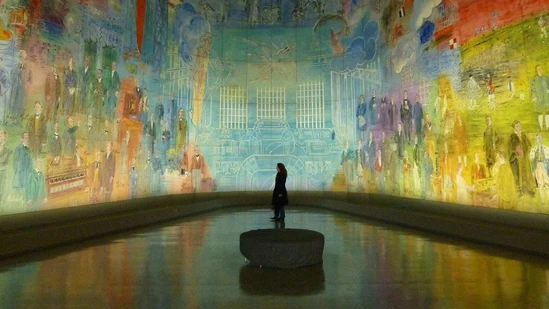Arts and culture have been significant components of society throughout the ages. However, some critics may find it difficult to describe the phenomena in only a few words. “The arts,” “arts and culture,” “entertainment” are just a few terms that come to mind when describing the creative endeavors in our lives. One of the most popular being “the arts and entertainment industry” seems like an all-encompassing description but it is by no means universal. In order to find an accurate description, it may be useful to research how individual societies describe the field in their government’s documents.
In the United States Bureau of Labor Statistics, the phenomena is referred to as the “Arts, Entertainment and Recreation” field. This economic sector refers to the operation, employment and quantitative value of all creative events. Many critics may be surprised to discover that the sector includes recreational events like going to theme parks and sporting events. Initially, it seems like a broad term, but the Bureau uses it excellently and provides associated data points. The public now has employment data, and can project which parts of the sector will increase or decrease in the future. The U.S. is one of many countries that provide these metrics.
Even though we have the quantitative data, what should we do with it? It is important to understand that these figures are not simply numbers. They provide a roadmap for organizations to plan their creative operations. Without these numbers, it would be far more challenging to expand the employment landscape for artists and other creatives. It is equally as important for media companies and other businesses that produce creative products and services to have an open mind regarding these figures. It is up to companies in both the private and public sectors to apply the quantitative data in order to develop qualitative data. Such is the goal of Arts Tribune and similar platforms.
The greatest piece of qualitative information regards the use of collaboration. It is through this process that the world has art galleries, theatre productions, films and so many other products and services. While some organizations have to focus on line items like TV show ratings or other areas that require numbers, the creatives themselves (and hopefully the organizations they work for) will try to increase the success of the sector by encouraging collaboration within their organizations and with partnering agencies. A great example would be a theatre company allowing part of their rehearsal process to be recorded for display on public access television; the play will gain more exposure and probably increase the number of tickets it will sell, and the viewers of the television program will learn something new. It’s a win-win situation.
Media companies can encourage such collaboration. Arts Tribune, for example, was created through the collaboration of two previous websites. The first was an online social network for artists and the second was for traditional news. Combining both ideas created a news platform for artists within all genres and mediums. Because of this, the platform continues to be collaborative in nature. It is a good source of information and also a great place to discover new forms of art, as some members have uploaded their original visual art pieces as well as one-act plays. A platform designed exclusively for artists and patrons of the arts that connects them with both qualitative and quantitative information. If we are successful in this endeavor of shining a spotlight on collaboration, we can celebrate the successes, revise our failures and discover new ways to create jobs and drive economic activity in the Arts, Entertainment and Recreation field.

